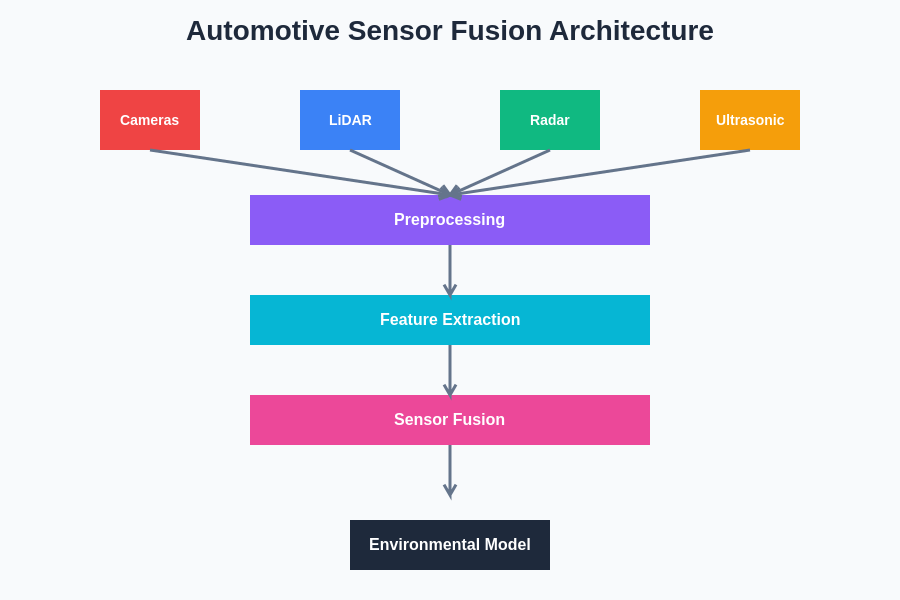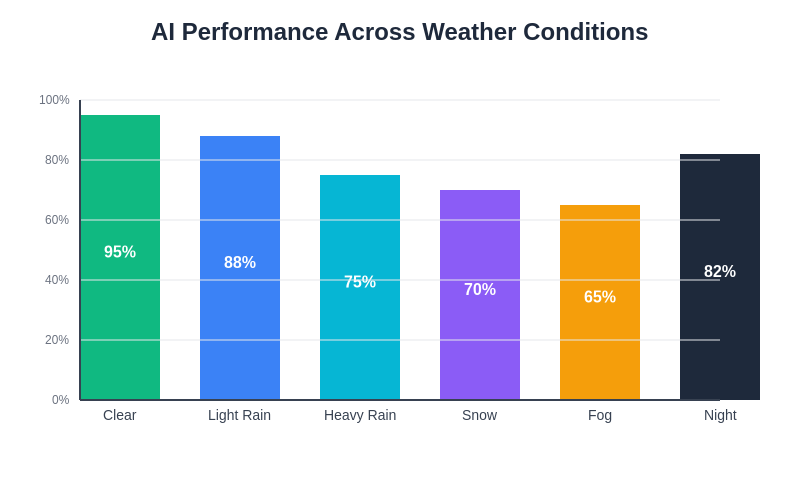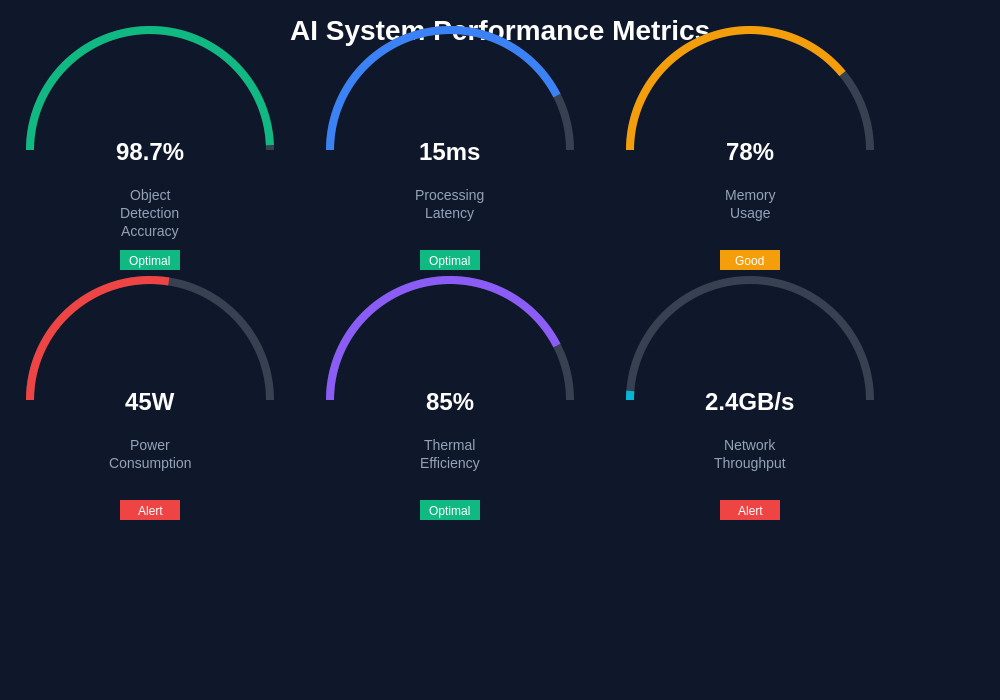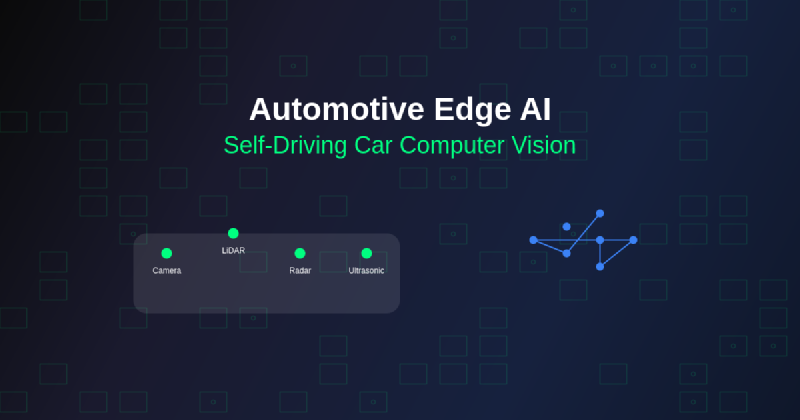The automotive industry stands at the precipice of a revolutionary transformation, where artificial intelligence and computer vision technologies converge to create autonomous vehicles capable of navigating complex real-world environments with superhuman precision and safety. Automotive edge AI represents the cutting-edge frontier of this evolution, bringing sophisticated neural networks and real-time processing capabilities directly into vehicles, enabling split-second decision-making that could mean the difference between life and death on modern roadways.
Discover the latest AI innovations in automotive technology to understand how rapidly evolving computer vision systems are reshaping transportation as we know it. The integration of edge AI into automotive systems represents not merely an incremental improvement in vehicle technology, but a fundamental paradigm shift that promises to revolutionize how we conceptualize mobility, safety, and the very nature of transportation itself.
The Foundation of Automotive Computer Vision
Computer vision in automotive applications extends far beyond simple camera-based systems, encompassing a sophisticated ecosystem of sensors, processors, and algorithms that work in perfect harmony to create a comprehensive understanding of the vehicle’s environment. Modern self-driving cars employ multiple camera systems, each optimized for specific tasks ranging from long-range highway monitoring to close-proximity parking assistance, creating a multi-layered perception system that rivals and often exceeds human visual capabilities.
The technological foundation of automotive computer vision rests upon advanced convolutional neural networks specifically designed to process visual information in real-time while maintaining the computational efficiency required for edge deployment. These networks must operate within the stringent power and thermal constraints of automotive environments while delivering the reliability and accuracy necessary for safety-critical applications where failure is not an option.
The integration of edge AI processing units directly within vehicles eliminates the latency associated with cloud-based processing, ensuring that critical safety decisions can be made in milliseconds rather than seconds. This local processing capability is essential for autonomous vehicles operating in dynamic environments where network connectivity may be unreliable or unavailable, making the vehicle’s onboard intelligence the sole arbiter of safe navigation decisions.
Real-Time Object Detection and Classification
The heart of automotive computer vision lies in its ability to detect, classify, and track objects in real-time with extraordinary precision and reliability. Modern systems must simultaneously identify and track dozens of objects including vehicles, pedestrians, cyclists, road signs, traffic lights, lane markings, and road hazards while maintaining perfect accuracy across varying lighting conditions, weather patterns, and environmental contexts.
Advanced object detection algorithms employ sophisticated neural network architectures that can process multiple camera feeds simultaneously, creating a unified three-dimensional understanding of the vehicle’s surroundings. These systems utilize temporal information to predict object movement patterns, enabling proactive decision-making that anticipates potential hazards before they become immediate threats to vehicle safety.
The computational challenges associated with real-time object detection in automotive environments are immense, requiring specialized hardware accelerators and optimized software architectures that can deliver consistent performance under the demanding conditions of real-world driving scenarios. Edge AI processors specifically designed for automotive applications provide the necessary computational power while maintaining the low power consumption and high reliability standards required for safety-critical automotive systems.
Experience advanced AI reasoning with Claude to understand how sophisticated neural networks process complex visual information for autonomous vehicle applications. The synergy between hardware acceleration and algorithmic optimization creates a processing pipeline capable of handling the massive data throughput required for comprehensive environmental perception.
Sensor Fusion and Multi-Modal Perception
Automotive edge AI systems rely on sophisticated sensor fusion techniques that combine information from multiple sensing modalities to create a comprehensive and robust understanding of the vehicle’s environment. Camera-based computer vision systems work in concert with LiDAR sensors, radar systems, and ultrasonic sensors to provide redundant and complementary information that ensures reliable perception even when individual sensors are compromised by adverse conditions.
The fusion of visual information with LiDAR point clouds creates highly accurate three-dimensional maps of the vehicle’s surroundings, enabling precise distance measurements and object localization that would be impossible using camera-based systems alone. Radar sensors provide crucial information about object velocities and can penetrate fog, rain, and snow conditions that might obscure optical sensors, ensuring consistent performance across diverse weather conditions.
Advanced sensor fusion algorithms employ probabilistic methods and machine learning techniques to weight information from different sensors based on their reliability and accuracy in specific environmental conditions. This dynamic sensor fusion approach ensures that the vehicle’s perception system automatically adapts to changing conditions, maintaining optimal performance whether navigating in bright sunlight, heavy rain, or complete darkness.

The architecture of modern sensor fusion systems represents a marvel of engineering sophistication, integrating multiple data streams into a unified perception framework that provides comprehensive environmental awareness. This multi-modal approach to perception creates redundancy and reliability that exceeds what any single sensor technology could achieve independently.
Edge Computing Architecture for Autonomous Vehicles
The computational architecture of automotive edge AI systems represents a carefully orchestrated balance between processing power, energy efficiency, and thermal management within the constraints of vehicular environments. Modern autonomous vehicles employ multiple specialized processors including graphics processing units optimized for neural network inference, digital signal processors for sensor data preprocessing, and application-specific integrated circuits designed specifically for automotive AI workloads.
The distributed computing architecture within autonomous vehicles enables parallel processing of multiple AI tasks while maintaining strict real-time performance requirements. Critical safety functions such as emergency braking and collision avoidance receive the highest priority in the processing hierarchy, ensuring that life-safety decisions are never delayed by less critical computational tasks such as route optimization or infotainment processing.
Thermal management represents a critical challenge in automotive edge AI systems, where processors must operate reliably across temperature ranges from arctic cold to desert heat while maintaining consistent performance levels. Advanced cooling systems and thermal-aware processing algorithms ensure that AI systems can maintain full operational capability regardless of environmental conditions or extended operation periods.
Neural Network Optimization for Automotive Applications
The deployment of neural networks in automotive edge AI systems requires extensive optimization to meet the unique requirements of vehicular environments. Model compression techniques including quantization, pruning, and knowledge distillation are employed to reduce the computational and memory requirements of neural networks while maintaining the accuracy levels necessary for safety-critical applications.
Automotive-specific neural network architectures are designed with inherent redundancy and fault tolerance to ensure reliable operation even in the presence of hardware failures or data corruption. These networks employ techniques such as ensemble learning and uncertainty quantification to provide confidence estimates for their predictions, enabling higher-level decision-making systems to appropriately weight AI recommendations based on their reliability.
The training process for automotive neural networks involves massive datasets collected from millions of miles of real-world driving scenarios, augmented with synthetic data generated through advanced simulation systems. This comprehensive training approach ensures that neural networks can handle the enormous variety of scenarios they may encounter in real-world deployment while maintaining consistent performance across diverse geographic regions and driving conditions.
Explore comprehensive AI research capabilities with Perplexity to delve deeper into the latest developments in neural network optimization for edge computing applications. The continuous evolution of optimization techniques enables increasingly sophisticated AI capabilities within the power and computational constraints of automotive systems.
Safety-Critical AI Systems and Functional Safety
The deployment of AI systems in safety-critical automotive applications requires adherence to rigorous functional safety standards that ensure reliable operation under all possible failure modes. Automotive AI systems must comply with ISO 26262 functional safety standards, implementing multiple layers of redundancy and fail-safe mechanisms that ensure vehicle safety even in the event of AI system failures.
Safety-critical AI architectures employ diverse redundancy strategies including multiple independent neural networks performing the same tasks, traditional algorithmic backups for critical functions, and comprehensive monitoring systems that continuously validate AI system performance. These safety mechanisms ensure that autonomous vehicles can safely transition to degraded operation modes or human control in the event of AI system anomalies.
The validation and verification of safety-critical AI systems involves extensive testing across millions of simulated scenarios and real-world validation miles, ensuring that AI systems behave predictably and safely across the enormous range of situations they may encounter. This comprehensive testing approach includes edge cases and adversarial scenarios designed to stress-test AI system robustness and reliability.
Real-Time Decision Making and Path Planning
Automotive edge AI systems must make complex navigation decisions in real-time while considering multiple competing objectives including safety, efficiency, passenger comfort, and legal compliance. Advanced path planning algorithms integrate information from computer vision systems with high-definition maps and real-time traffic data to generate optimal trajectories that navigate safely through complex traffic scenarios.
The decision-making process in autonomous vehicles employs hierarchical planning architectures that operate at multiple time scales, from immediate collision avoidance reactions measured in milliseconds to long-term route planning spanning hours or days. This multi-scale approach ensures that vehicles can respond appropriately to immediate threats while maintaining progress toward longer-term navigation objectives.
Machine learning techniques enable autonomous vehicles to continuously improve their decision-making capabilities through experience, learning from successful navigation strategies while avoiding patterns that lead to suboptimal outcomes. This continuous learning approach allows autonomous vehicles to adapt to local driving conventions and environmental conditions while maintaining safe and predictable behavior patterns.
Environmental Adaptation and Weather Resilience
Automotive computer vision systems must maintain reliable performance across diverse environmental conditions including rain, snow, fog, extreme temperatures, and varying lighting conditions from bright sunlight to complete darkness. Advanced image processing algorithms employ techniques such as adaptive exposure control, multi-spectral imaging, and AI-powered image enhancement to maintain consistent perception quality regardless of environmental conditions.
Weather-adaptive AI systems automatically adjust their processing algorithms and sensor fusion strategies based on detected environmental conditions, ensuring optimal performance whether operating in clear weather or severe storms. These adaptive systems can dynamically reconfigure sensor priorities, adjust neural network parameters, and modify decision-making thresholds to maintain safe operation across diverse weather scenarios.
The robustness of automotive AI systems to environmental variations is validated through extensive testing in controlled environments and real-world conditions, ensuring that vehicles can operate safely across the full range of conditions they may encounter throughout their operational lifetime. This comprehensive validation approach includes testing in adverse conditions that push the limits of sensor and AI system capabilities.

The performance characteristics of automotive AI systems across different weather conditions demonstrate the sophisticated adaptation mechanisms that enable reliable operation regardless of environmental challenges. These adaptive capabilities ensure that autonomous vehicles maintain consistent safety and performance standards across diverse operating conditions.
Advanced Driver Assistance Integration
Modern automotive edge AI systems seamlessly integrate with advanced driver assistance systems to provide a comprehensive safety net that enhances human driving capabilities while preparing for fully autonomous operation. These systems provide intelligent assistance for tasks such as adaptive cruise control, lane keeping assistance, automatic emergency braking, and traffic sign recognition while maintaining human oversight and control.
The integration of AI-powered assistance systems with human drivers requires sophisticated human-machine interface design that provides appropriate information and alerts without overwhelming or distracting the driver. These interfaces employ principles of cognitive engineering to ensure that AI assistance enhances rather than impedes human decision-making capabilities.
Graduated autonomy systems enable smooth transitions between different levels of autonomous operation, allowing vehicles to seamlessly hand control between AI systems and human drivers based on environmental conditions, system capabilities, and driver preferences. This flexible approach to autonomy ensures that vehicles can operate safely across diverse scenarios while maximizing the benefits of both human intelligence and AI capabilities.
Cybersecurity and AI System Protection
The integration of sophisticated AI systems into automotive applications creates new cybersecurity challenges that must be addressed to ensure the safety and reliability of autonomous vehicles. Automotive cybersecurity frameworks must protect against attacks targeting AI systems including adversarial examples designed to fool computer vision systems and data poisoning attacks that could compromise neural network training.
Advanced cybersecurity measures for automotive AI systems include encrypted communication channels, secure boot processes, hardware security modules, and continuous monitoring systems that detect anomalous behavior that might indicate cybersecurity threats. These comprehensive security measures ensure that AI systems remain trustworthy and reliable throughout their operational lifetime.
The validation of cybersecurity measures for automotive AI systems involves extensive penetration testing and security analysis to identify potential vulnerabilities and ensure robust protection against known attack vectors. This proactive approach to cybersecurity ensures that autonomous vehicles remain secure against evolving cybersecurity threats.
Performance Monitoring and Continuous Improvement
Automotive edge AI systems employ sophisticated monitoring and diagnostic capabilities that continuously assess system performance and detect potential issues before they impact vehicle safety or functionality. These monitoring systems track neural network accuracy, sensor performance, computational efficiency, and overall system health to ensure optimal operation.
Continuous improvement mechanisms enable automotive AI systems to benefit from fleet-wide learning and experience sharing, allowing individual vehicles to benefit from lessons learned across entire vehicle populations. This collective intelligence approach accelerates the improvement of AI system capabilities while maintaining strict privacy and security standards.
The integration of over-the-air update capabilities enables automotive AI systems to receive performance improvements, bug fixes, and new capabilities throughout their operational lifetime, ensuring that vehicles continue to benefit from advancing AI technologies long after their initial deployment.

The comprehensive monitoring of AI system performance across multiple dimensions enables proactive maintenance and continuous optimization of autonomous vehicle capabilities. These detailed performance metrics provide insights into system operation that enable ongoing refinement and improvement of AI algorithms and capabilities.
Future Developments and Industry Evolution
The future of automotive edge AI promises even more sophisticated capabilities including advanced scene understanding, predictive analytics, and enhanced human-AI collaboration that will further revolutionize transportation safety and efficiency. Emerging technologies such as neuromorphic computing and quantum-inspired algorithms offer the potential for dramatic improvements in AI system efficiency and capability.
The evolution toward fully autonomous vehicles will require continued advancement in AI system reliability, robustness, and adaptability to handle the enormous complexity and variability of real-world driving scenarios. This evolution will be driven by continued improvements in neural network architectures, training methodologies, and hardware acceleration technologies.
The broader implications of automotive edge AI extend beyond individual vehicle capabilities to encompass smart transportation infrastructure, vehicle-to-vehicle communication, and integrated mobility ecosystems that optimize transportation efficiency across entire urban regions. This holistic approach to intelligent transportation will transform not only how vehicles operate but how entire transportation systems function.
The continued development of automotive edge AI represents one of the most significant technological challenges and opportunities of our time, with the potential to dramatically improve transportation safety, efficiency, and accessibility while creating new economic opportunities and transforming urban planning and development patterns.
Disclaimer
This article is for informational purposes only and does not constitute professional advice regarding automotive technology, safety systems, or investment decisions. The views expressed reflect current understanding of automotive edge AI technologies and their applications. Readers should conduct their own research and consult with qualified professionals when making decisions related to autonomous vehicle technology. The effectiveness and safety of AI systems may vary based on specific implementations, environmental conditions, and regulatory requirements.
